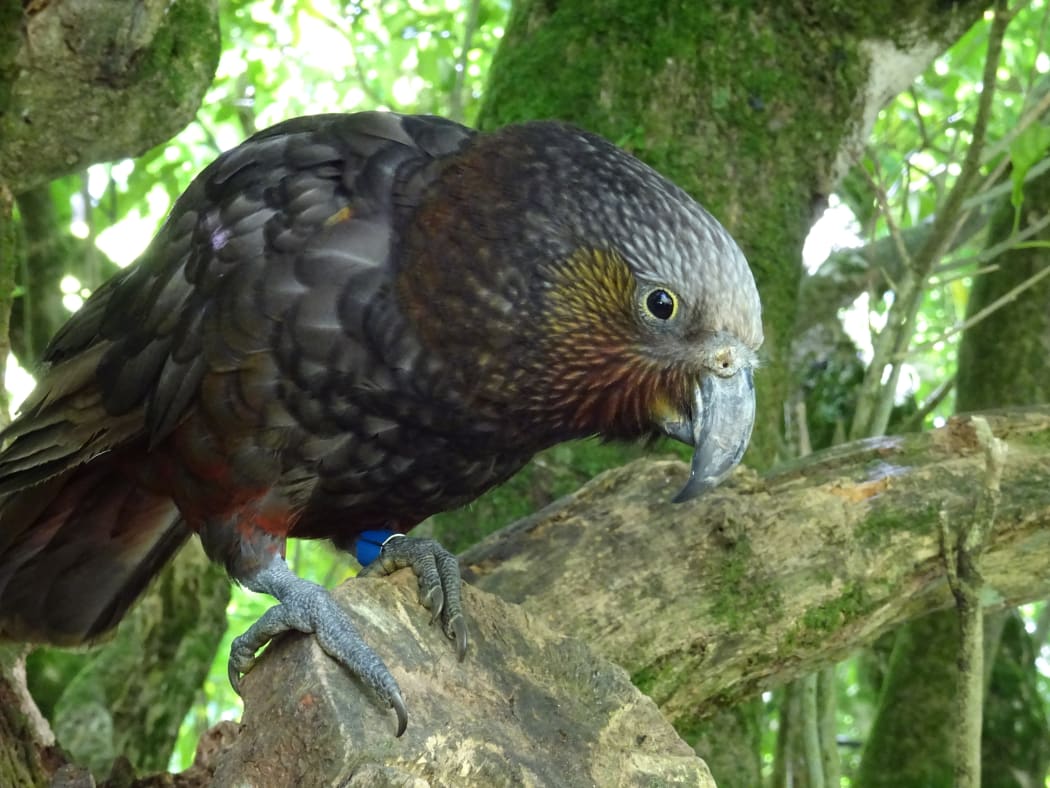They were extinct in Wellington for around 100 years before Zealandia re-introduced them in 2002, but now kākā are making themselves at home again in the capital.
And while that’s very good news, the friendly nature of these native parrots is exposing them to health risks.

Kaka or forest parrot Photo: Julia Loepelt / Victoria University of Wellington
Myfanwy Emeny from Wellington City Council’s urban ecology department, says there are now around 500 kākā in Zealandia and the wider city.
And although they are taking hold again in the city, conservationists who are monitoring kākā chicks are detecting high lead levels and metabolic bone disease.
“Lead is a problem but we don’t know where it’s coming from, were doing isotope sampling, but an option is lead nails in roofing, the kaka will actually chew on those,” says Emeny.
She says other potential sources are lead getting into guttering and kākā drinking water from them and puddles on the ground containing heavy metals from roads.
Metabolic bone disease is caused by an imbalance of nutrients – specifically when calcium and phosphorous levels are out of whack and young kākā don’t develop healthy bones.
And this is because we can’t resist feeding them and because the social kākā love their treats, they’re not getting their natural diet.
“When they’re around people it’s very hard to resist feeding them. A lot of what the kākā are getting fed is not natural and they’re getting too much of the wrong food.
“The parents then regurgitate this to the chicks in the nest the chicks aren’t growing up on the correct diet so their bones aren’t forming properly.”
The main problem she says is nuts, grains and cheese all of which are high in phosphorous.
“When they’re left to find their own food the parents are really good at finding a balanced diet for their chicks the best way to go is give them nothing.”
And if you think the answer is to give them just a little, think again. The crafty kākā will just visit the neighbours to get their favourite treats.
Another reason not to encourage them to visit the house is it discourages them from engaging in natural behaviour and they’re more likely to spend time chewing on those lead roofing nails.

